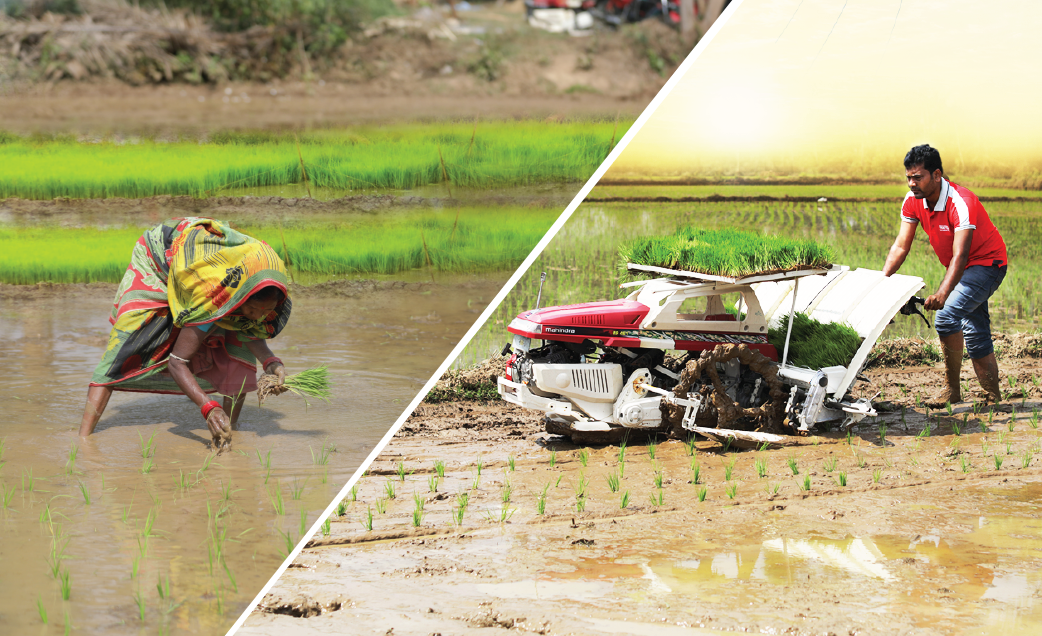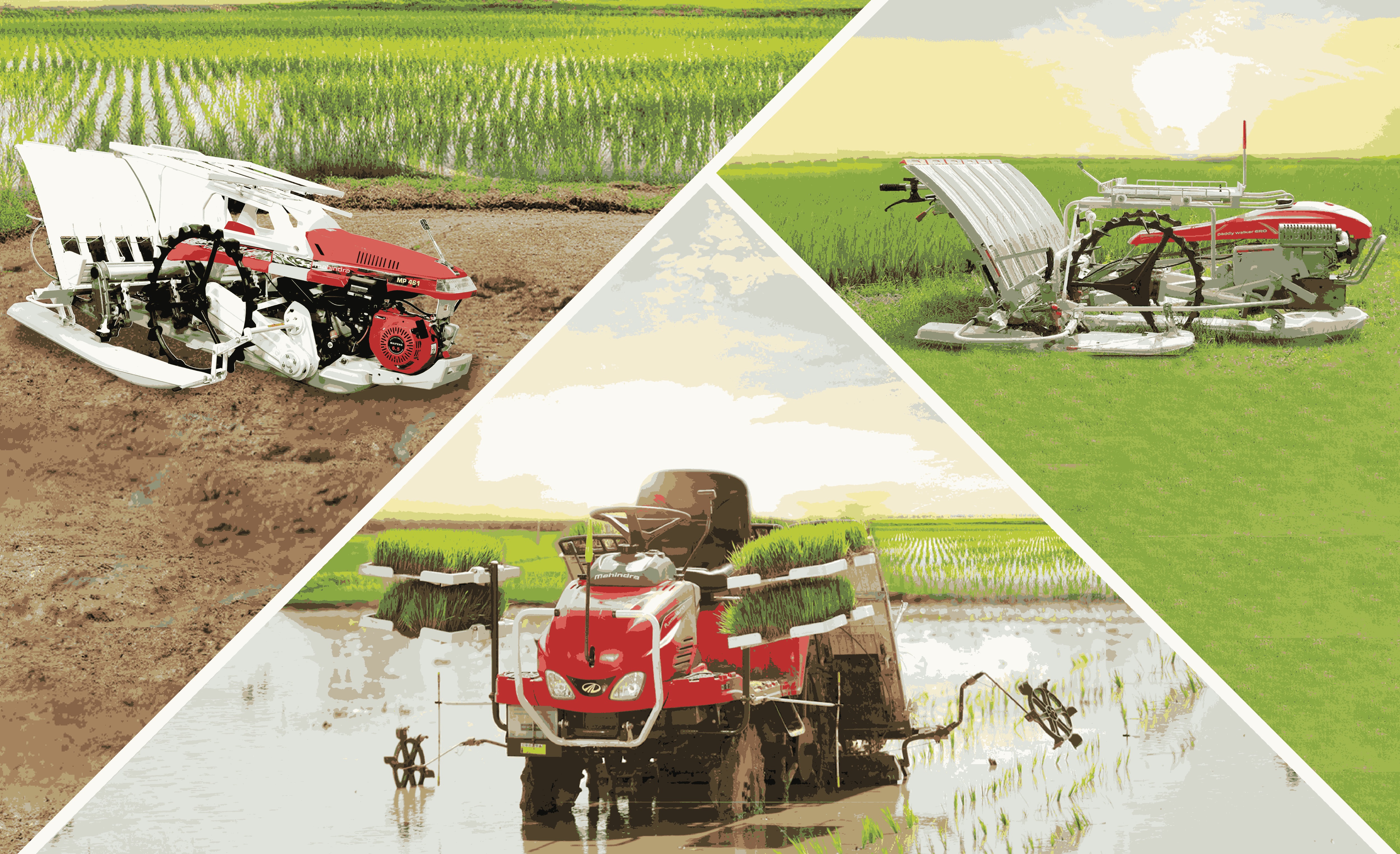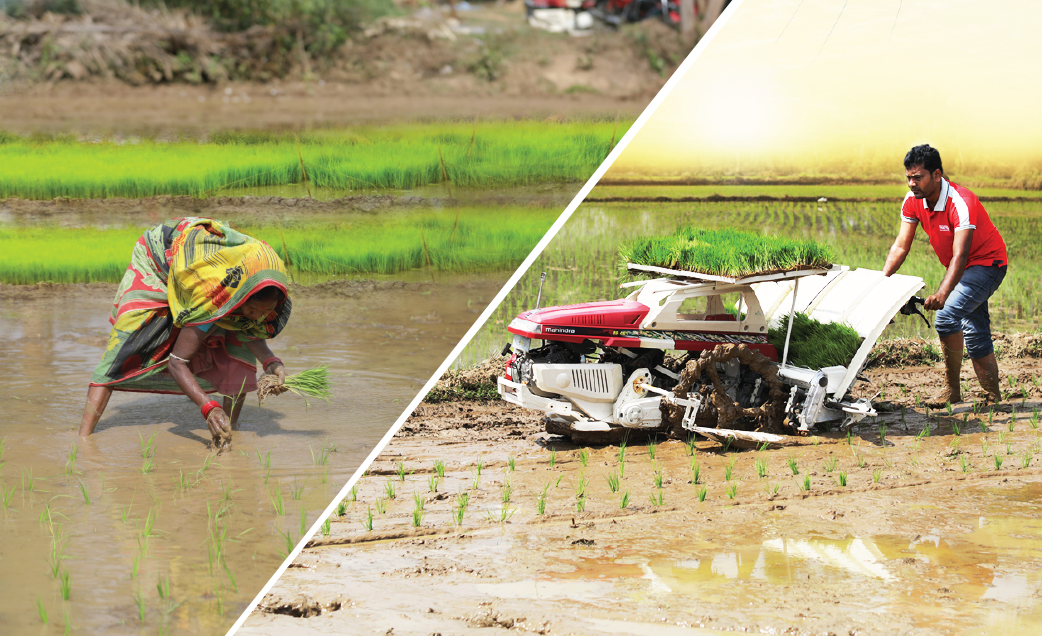Inspirational journeys
Follow the stories of academics and their research expeditions
Comparative Analysis: Manual Transplanting vs. Rice Transplanting Machines

Introduction
Rice transplantation is a critical process in rice cultivation that determines the success of the crop. Traditionally, manual transplanting has been the predominant method used by farmers, requiring a significant amount of labour and time. However, with the advancements in agricultural technology, rice transplanting machines have emerged as an efficient alternative. In this blog post, we will conduct a comparative analysis of manual transplanting versus rice transplanting machines, exploring the benefits, drawbacks, and overall impact on productivity and efficiency. By understanding the advantages and limitations of each method, farmers can make informed decisions on the most suitable approach for their specific circumstances.
Manual Transplanting: Traditional Approach
Manual transplanting involves the labour-intensive process of manually planting rice seedlings in the field. Skilled labourers perform this task, carefully placing individual seedlings at specified intervals and maintaining proper spacing.
While manual transplanting has been practised for centuries, it has certain limitations:
a) Labor Intensive: Manual transplanting requires a significant amount of skilled labour. This reliance on manual labour can be challenging, especially during peak seasons when labour availability may be limited, leading to higher labour costs and potential delays.
b) Time-Consuming: The manual process of transplanting seedlings is time-consuming. It involves bending down and placing each seedling individually, which slows down the overall transplantation process. This can impact the efficiency of farming operations and hinder timely completion.
c) Inconsistent Plant Spacing: Achieving consistent plant spacing is challenging with manual transplanting. Variability in spacing can result in uneven growth, making it difficult for farmers to manage the crop effectively and optimize resource utilization.
Rice Transplanting Machines: Advancements in Automation
Rice transplanting machines are innovative agricultural tools designed to automate the transplantation process. These machines offer several advantages over manual transplanting:
a) Increased Efficiency: Rice transplanter machine significantly increase the efficiency of rice transplantation. Equipped with mechanisms such as seedling trays, conveyor belts, and automated planting systems, these machines can transplant seedlings at a consistent pace, covering larger areas in less time compared to manual labour.
b) Precise Planting: Rice transplanter machines ensure uniform plant spacing and accurate planting. They are designed to maintain consistent distances between seedlings, optimizing plant growth and facilitating better resource utilization, resulting in higher crop yields and improved overall plant health.
c) Labor Savings: The use of rice transplanter machines reduces the dependency on manual labour. These machines can replace a significant number of labourers, addressing labour shortages and reducing labour costs. Farmers can allocate their workforce to other farm activities, such as crop monitoring, pest control, and harvesting.
d) Customization and Adaptability: Rice transplanter machines offer customization options to match specific farm requirements. Farmers can adjust settings such as planting depth, spacing, and planting patterns based on their preferences and field conditions. These machines are adaptable to different terrains and can operate efficiently in both flat and sloping fields.
Comparative Analysis: Factors to Consider
To make an informed choice between manual transplanting and rice transplanting machines, farmers should consider various factors:
a) Cost Analysis: Conducting a cost analysis is essential to determine the financial implications of each method. This analysis should include labour costs, equipment costs (including the purchase or rental of rice transplanting machines), maintenance expenses, and the potential return on investment. While rice transplanter machines require an initial investment, they offer long-term benefits in terms of labour savings and increased productivity.
b) Labor Availability: Assessing the availability and reliability of manual labour is crucial. If labour shortages are prevalent or labour costs are high, investing in rice transplanter machines may be a more viable option. However, in regions where labour is abundant and affordable, manual transplanting may still be a competitive choice.
c) Scale of Operations: The scale of farming operations plays a significant role in deciding the most suitable approach. For small-scale farmers with limited labour resources, rice transplanter machines can streamline operations, improve efficiency, and reduce costs. Large-scale farmers with access to a sufficient labour force may opt for manual transplanting if it proves economically feasible.
d) Field Conditions: Field conditions, such as soil type, topography, and size, should be taken into account. Rice transplanter machines are designed to handle different terrains, including uneven or sloping fields. However, if the fields are irregularly shaped or have obstacles that impede machine operation, manual transplanting may be more practical.
e) Training and Technical Support: Consider the availability of training and technical support for operating and maintaining rice transplanter machines. Farmers must be adequately trained to handle and troubleshoot these machines effectively. Access to technical assistance and spare parts is crucial for minimizing downtime and ensuring optimal machine performance.
Impact on Productivity and Efficiency
Rice transplanter machines have a positive impact on productivity and efficiency compared to manual transplanting. With their automated systems, these machines can transplant seedlings at a faster rate, covering larger areas in less time. This increased efficiency enables farmers to complete transplantation tasks quickly, allowing them to focus on other essential farm activities and achieve higher overall productivity.
Moreover, rice transplanter machines ensure uniform plant spacing, promoting consistent plant growth and optimizing resource utilization. This precise planting facilitates better crop management, easier weed control, and more efficient application of water and fertilizers. The result is enhanced crop health, improved yield potential, and reduced wastage of resources.
Conclusion
In conclusion, the comparative analysis of manual transplanting and rice transplanter machines highlights the advantages and limitations of each method. While manual transplanting is a traditional approach, it requires significant labour and time, leading to potential challenges such as labour shortages and inconsistent plant spacing. On the other hand, rice transplanter machines offer increased efficiency, precise planting, labour savings, and customization options. The Mahindra Rice Transplanter is an excellent option available in the market for farmers, offering a range of features that enhance productivity and efficiency in rice transplantation. They optimize resource utilization, improve crop management, and enhance overall productivity.
With its powerful engine capacity, this machine can work efficiently even in deep puddled fields without any RPM drop. The unique R Fork and Push Rod Planting Mechanism ensure gentle transplanting, minimizing damage to seedlings. The presence of an R Fork makes it easy to maintain and replace wearable parts, which makes the job incredibly easy. Also, The single control lever for hydraulic and planting operations provides ease of use for the operator during transplanting. The Rubber Long Life Lugged Wheel, another distinctive feature, offers better traction and smooth movement between fields.
The Mahindra rice transplanter machine also includes allowing the selection and auto adjustment of seedlings per hill for efficient transplanting and minimizing wastage. The wheel height adjustment feature enables easy adaptation to different soil depths, ensuring optimal performance in varying field conditions. The effective hydraulic and auto hydraulic system ensures uniform planting depth in both hard and soft soils, while also allowing for auto adjustment of machine height in case of obstacles, preventing accidents or machine damage. This mahindra’s rice transplanter machine would definitely act as a saviour for farmers. It is a reliable and efficient tool that can greatly benefit farmers in their rice cultivation operations.
Farmers should consider factors such as cost analysis, labour availability, scale of operations, field conditions, and access to training and technical support when deciding between manual transplanting and rice transplanter machines. The choice ultimately depends on individual farm requirements, labour availability, and financial feasibility. However, machines can save farmers from tedious work by simplifying certain methods. The best example would be the adjustment of seeds according to the environment of the plantation.
As Agricultural Machineries continues to advance, rice transplanter machines represent a significant innovation that can revolutionize rice cultivation, address labour shortages, and improve farm productivity. Farmers embracing these technologies can achieve higher yields, reduce labour costs, and enhance overall efficiency, contributing to sustainable and profitable agriculture.
By understanding the comparative analysis of manual transplanting and rice transplanter machines, farmers can make informed decisions that align with their farm goals, optimize resource utilization, and ensure long-term sustainability in rice cultivation.
0 Comments
Categories
Recent posts
The Use, Benefits, and Importance of Rice Transplanting Machines
Tue, 06 Aug 2024





Leave a comment